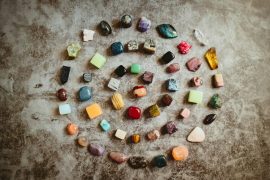When it comes to diamonds, there are many factors that go into choosing a cut.
The Ideal cut is one of the most popular choices for engagement rings and other high-quality jewelry.

It has a very specific set of criteria that must be met in order to be considered an ideal cut diamond.
This article will discuss what makes up an ideal cut diamond, how to recognize the Astor ideal, and how it compares to other cuts like Astor Ideal and Ideal.
What is the difference between ideal and Astor ideal?
There are three main categories of cut diamonds: Ideal, Excellent, and Very Good.
The Astor Ideal line is ideal for those who want to get the highest quality cuts at a lower price point.
It’s not just about looks; it’s about quality as well.
If you want a diamond with an extremely high cut grade, then it’s better to go with an Ideal or Excellent cut diamond than a Very Good one.
The only problem is that the price difference between these two grades can be quite large.
The Astor Ideal is known as a “square modified brilliant” cut, while the Ideal is a “square modified brilliant.” Both are diamond cuts that are very similar in style.

The main difference between them is their depth percentage—the Astor Ideal has a depth percentage of 63%, while the Ideal has a depth percentage of 68%.
This means that the Ideal has more depth than the Astor Ideal, making it slightly more sparkly.
This means that you can get a great quality diamond without breaking the bank in the process.
However, if you are looking for quality, the Astor Ideal line might not be the best choice.
They also have good durability and strength ratings (which means they’ll last longer than other types of diamonds).
“Ideal” and “Excellent” are both terms used to describe Blue Nile Astor diamonds.
They have all the characteristics of an ideal cut diamond and will make your center stone shine even brighter by reflecting light back at its source.
What does Astor ideal mean?
The ideal round brilliant-cut diamond has 57 facets, which are separated by 32 often invisible lines called girdles — one on each side of the stone — where no facets are cut into the surface.
In terms of diamond quality, the most important factor is cut. A diamond’s cut refers to how well it reflects light.
The better a diamond’s cut is, the more brilliant and scintillating its shine will be.
The ideal cut for a round brilliant-cut diamond is defined by its proportions and angles. Diamonds need to have specific dimensions that allow for maximum light performance.
A well-cut diamond will reflect back all of the light that enters it, so it looks as if you can see right through the stone.
When light enters a poorly-cut diamond, it distorts and bends as it travels through its crystal structure and does not return back out in a desirable way.

A well-cut diamond has many of its sides cut at an angle that allows light to enter and exit in one smooth path with minimal distortion or loss of brilliance.
Astor Ideal Cut Diamonds are rare because they take longer to produce than a regular round brilliant diamond.
They are also more expensive because they are more difficult to make and therefore fewer in number than other cuts on the market today.
Astor Ideal Cut Diamonds come in all shapes/sizes including round, oval, pear, marquise, heart shape (some), emerald cut (some), princess cut (some), and more!
What is ideal cut diamond?
An ideal cut diamond has 59 facets, which allows it to reflect light and sparkle like no other.
The depth, table size, crown angle, and pavilion angle are all carefully calculated to produce maximum brilliance while maintaining symmetry and proportionality.
Ideal cut diamonds are also sometimes called “excellent” cuts or “very good” cuts because they possess nearly perfect symmetry, proportions, and polish.

They reflect more light than other types of diamonds and have higher clarity grades than most other shapes (except round).
However, they can be difficult to find since they tend to be expensive because they require additional polishing work before they can be cut into an ideal shape.
Ideal cut diamonds have several unique characteristics:
- They are symmetrical; each side of the stone is identical to the others. A well-cut diamond will have the same proportions from top to bottom as from left to right — like an equilateral triangle or square — which means that all four corners are the same distance from each other in length and width, and all four corners are exactly 90 degrees (or perpendicular) to one another. These proportions give an ideal cut diamond maximum brilliance, dispersion, fire, or sparkle.
- They reflect light back through the top or crown of the stone (top half). When light enters an ideal cut diamond, it reflects off two surfaces: first off of a flat bottom facet that acts as a mirror; second off of a smooth surface called “table”.
A well-cut diamond is a work of art, and it takes many years of experience and expertise to achieve this level of perfection. The American Gem Society (AGS) has developed a grading system for diamonds that ranks each stone on its cut as Excellent, Very Good, Good, or Fair.
What is the difference between ideal and excellent cut?
The difference between ideal and excellent cuts is that the former is from AGS and the latter is from GIA.
- AGS grades diamonds based on the symmetry of their facets, proportions and polish. The ideal cut grade is based on a scale that runs from poor to excellent with the highest grades being reserved for extremely rare stones.
- GIA uses a different scale which ranges from flawless to poor. These are subjective opinions — there’s no definitive way to measure cut quality because it’s not possible to quantify how much light is reflected by a diamond’s surface.
The reason that there are different grading labs is that they each have their own methods for evaluating a diamond’s polish and symmetry.

However, both labs use machines that can measure light refraction through a diamond at various angles and then compare their results to those of similar stones graded by other labs.
This helps ensure consistency when evaluating each stone’s clarity, color, fluorescence, and culet size among other things.
Conclusion:
If you’re looking for a diamond engagement ring online, you should know that there are some important differences between the Astor Ideal and the Ideal. Of course, either one will make a great choice, depending on your needs and preferences. Just keep the details in mind before you decide which one is better for you.





